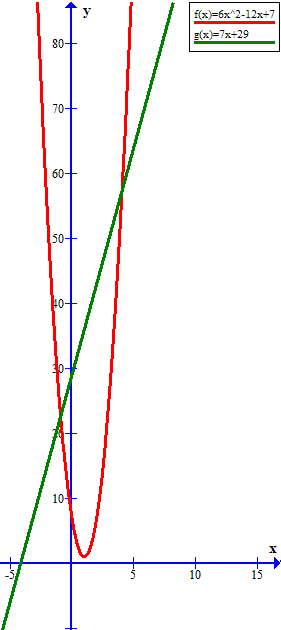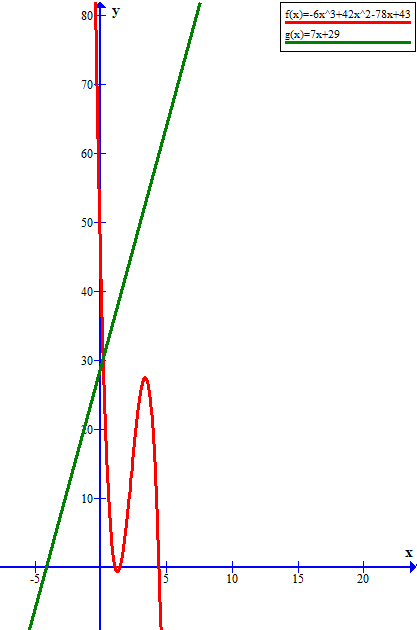Which is the correct answer?
A function, f, passes through the points (1,1), (2,7) and (3,25). A function, g, passes through the points (1,36), (2,43) and (3,50).
Select the correct answer.
As the value of x increases, the value of f(x) will never exceed the value of g(x).
As the value of x increases, the value of f(x) will eventually exceed the value of g(x).
As the value of x increases, the values of f(x) and g(x) remain constant.
As the value of x increases, the value of f(x) and the value of g(x) both approach 100.
A function, f, passes through the points (1,1), (2,7) and (3,25). A function, g, passes through the points (1,36), (2,43) and (3,50).
Select the correct answer.
As the value of x increases, the value of f(x) will never exceed the value of g(x).
As the value of x increases, the value of f(x) will eventually exceed the value of g(x).
As the value of x increases, the values of f(x) and g(x) remain constant.
As the value of x increases, the value of f(x) and the value of g(x) both approach 100.
1 Answer
I think it is likely that the intended answer was
"As the value of x increases, the value of f(x) will eventual exceed the value of g(x)"
however...
Explanation:
Without any information about the nature of
From the given information, it seems that
~~~~~~~~~~~~~~~~~~~~~~~~~~~~~~~~~~~~~~~~~~~~~~~
If
then
and
From the graphs we can see that in this case for large values of

However (removing the requirement that
also fits the given data values, but the graphs now look like:

and except of small values of
Similarly, if
